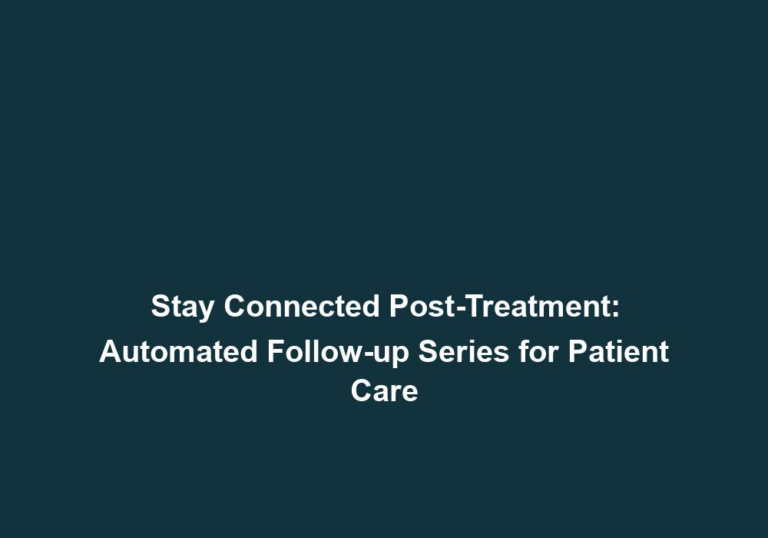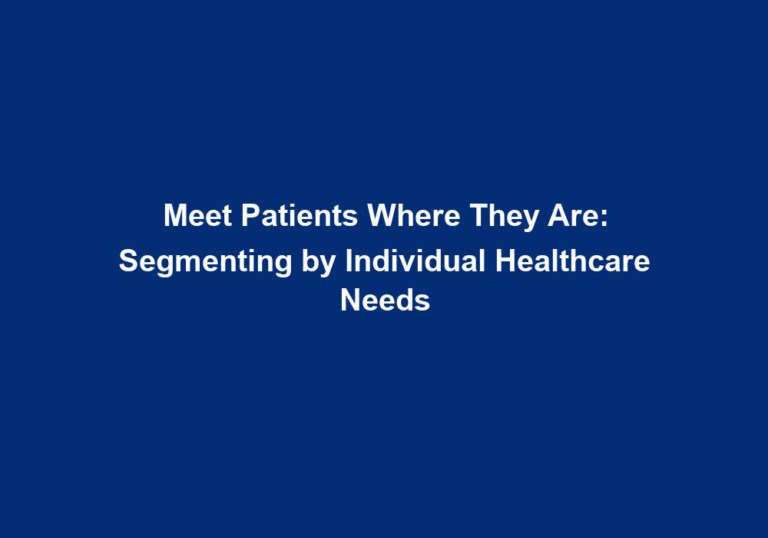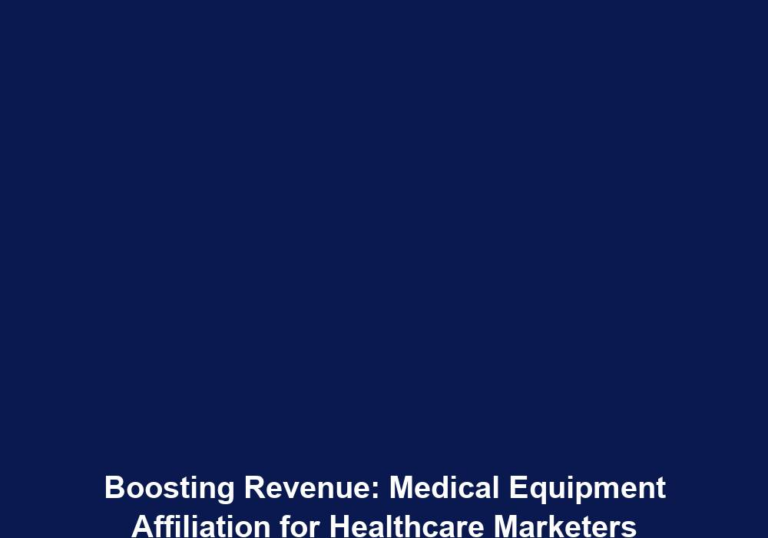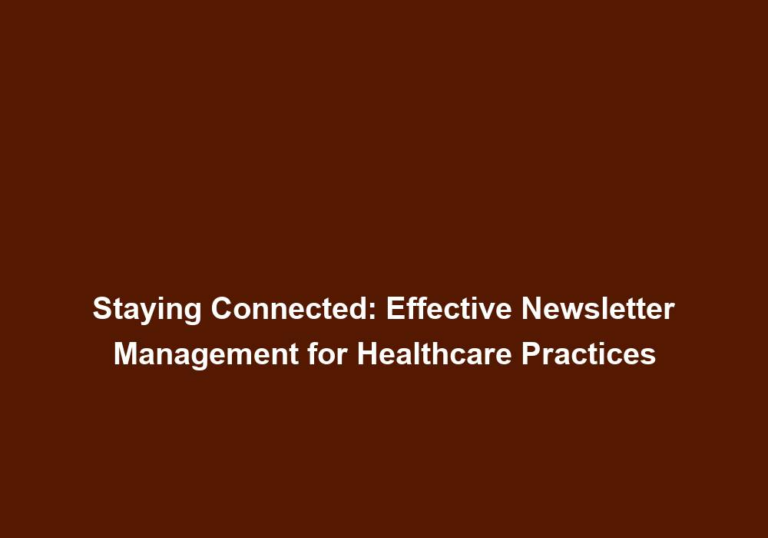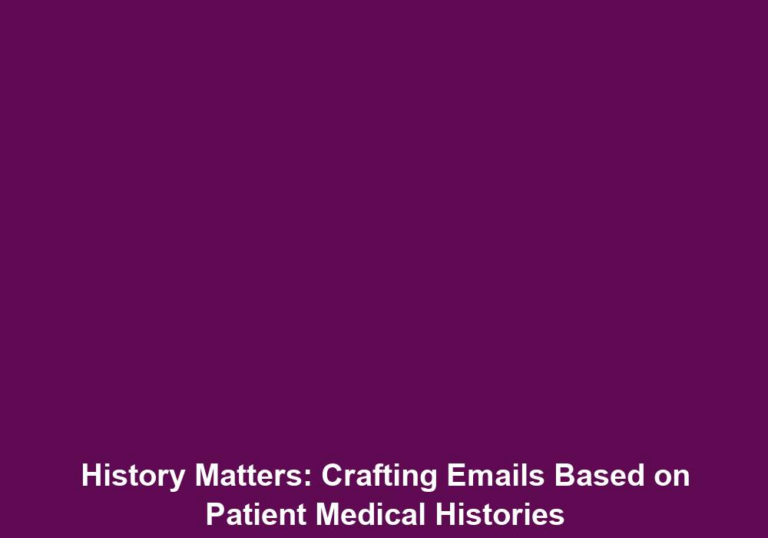Streamlined Marketing: Embracing Automated Campaigns in Healthcare
In today’s digital era, the healthcare industry is rapidly evolving, and marketing strategies have become integral in reaching and engaging with patients. With the immense amount of data available and the increasing expectations for personalized experiences, healthcare providers must embrace automated marketing campaigns to effectively connect with their target audience. Streamlining marketing efforts through automation not only saves time and resources but also enhances patient satisfaction and delivers better healthcare outcomes.
The Power of Automated Campaigns in Healthcare Marketing
Automated campaigns in healthcare marketing refer to the use of technology and software to automate various marketing tasks and processes. These campaigns leverage patient data, preferences, and behavior to deliver personalized and timely messages across multiple channels, such as email, social media, and websites. By automating repetitive tasks, healthcare providers can focus on high-value activities, such as crafting compelling content and analyzing campaign performance.
Advantages of Automated Campaigns in Healthcare
-
Enhanced Efficiency: Automation eliminates the need for manual execution of marketing tasks, allowing healthcare providers to reach a larger audience without increasing their workload. By automating tasks like email scheduling and social media posting, campaigns can be set up in advance, allowing for consistent and timely communication with patients. This not only saves time but also ensures that messages are delivered promptly, improving overall campaign performance.
-
Personalized Patient Engagement: Automated campaigns enable healthcare providers to deliver personalized messages based on patient demographics, preferences, and behavior. By segmenting patients based on factors like age, medical conditions, or interests, healthcare organizations can tailor content to individual needs, creating meaningful connections with patients. Personalization enhances patient engagement, as patients are more likely to respond to messages that are relevant to their specific healthcare needs.
-
Improved Patient Experience: Timely and relevant communication is crucial in healthcare. With automated campaigns, providers can send appointment reminders, personalized health tips, and follow-up emails, ensuring that patients receive the necessary information at the right time. This improves the overall patient experience and satisfaction. For example, automated appointment reminders can reduce no-show rates and improve patient attendance, leading to better healthcare outcomes.
-
Data-Driven Decision Making: Automated campaigns generate valuable data and insights, allowing healthcare providers to make informed decisions. By tracking metrics like open rates, click-through rates, and conversion rates, organizations can gain a deeper understanding of patient preferences and behavior. This data can be used to optimize campaigns, identify trends, and refine marketing strategies for better results. For instance, analyzing campaign data may reveal that certain patient segments respond better to specific types of content, enabling providers to tailor future campaigns accordingly.
Implementing Automated Campaigns in Healthcare Marketing
Now that we understand the advantages of automated campaigns, let’s explore the steps involved in implementing them effectively within the healthcare industry.
Step 1: Define Campaign Goals and Objectives
Before diving into automation, it is essential to identify your campaign goals and objectives. Whether it’s increasing patient appointments, driving engagement on social media, or promoting a specific healthcare service, clearly defining your goals helps shape the entire campaign strategy. By setting specific, measurable, achievable, relevant, and time-bound (SMART) goals, healthcare providers can align their automated campaigns with their overall marketing objectives and measure their success accurately.
Step 2: Collect and Segment Patient Data
To deliver personalized messages, healthcare providers need access to accurate and up-to-date patient data. Implementing a robust customer relationship management (CRM) system can help collect, organize, and segment patient information effectively. By segmenting patients based on demographics, medical conditions, or preferences, providers can tailor campaigns to specific groups, maximizing their impact. For example, a healthcare organization can segment patients with diabetes and send them targeted messages regarding diabetes management, medication reminders, and lifestyle tips.
Step 3: Choose the Right Automation Platform
Selecting the right automation platform is crucial for successful campaign execution. Consider platforms that integrate with your existing systems, offer advanced segmentation capabilities, and provide user-friendly interfaces. Evaluate features like email marketing, social media management, and analytics to ensure they align with your campaign objectives. Additionally, look for automation platforms that comply with healthcare industry regulations, such as HIPAA, to ensure the security and privacy of patient data.
Step 4: Craft Compelling and Relevant Content
Content is king, even in automated campaigns. To engage patients effectively, create content that is informative, educational, and relevant to their healthcare needs. Whether it’s personalized emails, blog posts, or social media updates, ensure your content provides value and encourages patients to take action. Incorporate storytelling techniques, visuals, and interactive elements to captivate your audience. For example, you can share success stories of patients who have benefited from a specific healthcare service or provide tips for managing a chronic condition.
Step 5: Automate Campaign Execution
Once you have your goals, patient data, automation platform, and compelling content in place, it’s time to automate the campaign execution. Set up workflows and triggers that automatically send messages based on predefined conditions, such as appointment reminders, prescription refill notifications, or health education materials. Test and optimize your campaigns regularly to ensure they are effective and aligned with your goals. For instance, A/B testing different subject lines or call-to-action buttons can help determine which variations yield higher engagement rates.
Step 6: Monitor, Measure, and Optimize
Tracking campaign performance is crucial to understanding what works and what needs improvement. Monitor key metrics such as open rates, click-through rates, and conversions to evaluate the success of your campaigns. Use the insights gained to refine your strategies, optimize content, and continuously enhance patient engagement. Additionally, leverage analytics tools to gain a deeper understanding of patient behavior, preferences, and campaign effectiveness. This data-driven approach allows healthcare providers to make data-backed decisions and continuously improve their automated campaigns.
The Future of Automated Campaigns in Healthcare Marketing
As the healthcare industry continues to evolve, automated campaigns will play a pivotal role in marketing strategies. With advancements in artificial intelligence and machine learning, healthcare providers can leverage automation to create even more personalized experiences for patients. Predictive analytics can help identify patients at risk, while chatbots and virtual assistants can provide real-time support and answers to patient inquiries. By embracing automated campaigns in healthcare marketing, providers can streamline their efforts, improve patient engagement, and ultimately deliver better healthcare outcomes. The future of marketing lies in the effective use of automation, allowing healthcare organizations to focus on what matters most – providing exceptional care to their patients.


